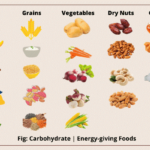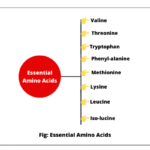Concentration of Solution | How to Express It
When dealing with solutions, understanding the concentration of a solution is important. The term “concentration” refers to the amount of solute dissolved in one unit of solvent or solution. The concentration of solution is the amount of solute present in the specified amount (mass or volume) of solvent or solution. In other words, concentration of solution is a measure of how much solute is dissolved in the given amount of solvent or solution.
For example, for a sugar solution,
Concentration of solution = amount of sugar dissolved in a given amount of solution.
It the quantity of solute is small, it is called dilute solution. If the quantity of solute is more, it is called concentrated solution.
We can express the concentration of solution in the terms of either the amount of solute present in a given mass or volume of the solution, or the amount of solute dissolved in a given mass or volume of solvent. It provides valuable information about the strength, purity, and effectiveness of a solution.
Concentration of a solution is usually expressed in terms of a ratio or a percentage. It determines its properties and behavior, making it an essential parameter in various scientific, industrial, and everyday applications. Different units of concentration provide flexibility and adaptability to diverse situations, allowing for accurate and meaningful measurements.
Methods of Expressing Concentration of a Solution
Most of chemical reactions in the laboratories are carried out in solutions. So, it is important to understand how to express the concentration of a substance present in the solution. There are following ways to express the concentration of a solution or the amount of substance or solute present in its given solution. Most common units of concentration are as follows:
- Mass percent or Percent by mass (w/w)
- Volume percent or Percent by volume (v/v)
- Percent mass by volume (w/v)
- Molarity (M)
- Molality (m)
- Normality (N)
- Mole fraction (X)
Mass percent or Percent by mass:
The amount of solute in grams present in 100 grams of solution is called mass percent or percent by mass. In other words, the mass of solute in grams dissolved per 100 grams of its solution is called mass percent. It is denoted by (w/w). Therefore, it is also called mass by mass percentage. For example, 5% solution of sugar means that 5 g of sugar is present in 100 g of the solution, i.e. 5 g of sugar has been dissolved in 95 g of water. Mathematically, we can express the mass percent of a solute in a solution as:
Mass percent of the solute = (Mass of solute / Mass of solution) * 100
Mass of solution = Mass of solute + Mass of solvent
Remember that you must have to express both mass of solute and that of the solution in the same units, i.e. both in grams or both in kilograms.
Example 1:
Calculate the mass percent of the solute in a solution when a solution is prepared by adding 2 g of sodium chloride to 18 g of water.
Solution:
Mass of solute (NaCl) = 2 g
Mass of solvent (H2O) = 18 g
Mass of solution = Mass of solute + Mass of solvent = 2 + 18 = 20 g
Mass percent of solute = (Mass of solute / Mass of solution) * 100 = (2 / 20) * 100 = 10% (Ans)
Example 2:
Calculate the masses of cane sugar and water needed to prepare 250 g of 20% solution of cane sugar.
Solution:
Mass percentage of solute (cane sugar) = 20
Mass of solution = 250 g
We know that,
Mass percent of solute = (Mass of solute / Mass of solution) * 100
20 = (Mass of solute / 250) * 100
Mass of solute = (20 * 250) / 100 = 50 g (Ans)
Mass of water = 250 – 50 = 200 g (Ans)
Volume percent or Percent by volume:
Volume percent is similar to mass percent but it is expressed in terms of the volume of the solution instead of mass. It is the volume of solute in mL present in 100 mL solution. In other words, the number of units of volume of the solute dissolved per 100 units of volume of solution is called volume percent. It is denoted by (v/v). Therefore, it is also called volume by volume percentage. For example, a 10% solution of ethyl alcohol contains 10 ml of alcohol present in 100 ml of the solution. Mathematically, we can express volume percent as follows:
Volume percent of solute = (Volume of solute / Volume of solution) * 100
Example 3:
A solution is prepared by dissolving 10 ml of glucose in 80 ml of water. Calculate the volume percent of each of glucose and water.
Solution:
Volume of glucose = 10 ml
Volume of water = 80 ml
Total volume of solution = 10 + 80 = 90 ml
Volume percent of solute (glucose) = (Volume of solute / Volume of solution) = (10 / 90) * 100 = 11.11% (Ans)
Volume percent of solvent (water) = 100 – volume of glucose = 100 – 11.11 = 88.89% (Ans)
Example 4:
A solution contains 10 ml of ethyl alcohol in 90 ml of water. Calculate the concentration in terms of volume percentage of ethyl alcohol in the solution.
Solution:
Volume of solute (ethyl alcohol) = 10 ml
Volume of solvent (water) = 90 ml
So, volume of solution = 10 + 90 = 100 ml
Thus, volume percentage of solute in a solution = (10 / 100) * 100 = 10% (Ans)
Percent mass by volume:
The mass of solute in grams present in 100 ml of the solution is called percent mass by volume or mass by volume percentage. It is denoted by (w/v). Therefore, it is also called mass by volume percentage. Mathematically, we can express it as below:
Percent of solute mass by volume = (Mass of solute / Volume of solution) * 100
Example 5:
5 g of sodium chloride is dissolved in 100 ml of water. Calculate the mass percentage of sodium chloride in the solution.
Solution:
Mass of sodium chloride = 5 g
Volume of water = 100 ml
Density of water = 1.0 g/ml
Since, density = Mass / Volume
Therefore, mass of water = 1 * 100 = 100 g
Total mass of solution = Mass of solute + Mass of solvent = 5 + 100 = 105 g
Mass percentage of sodium chloride = (5 / 105) * 100 = 4.76% (Ans)
The above three units of concentration are called percentage concentration. It represents the amount of solute present in 100 g or 100 ml of solution.
Molarity (Molar Concentration):
The number of moles of solute dissolved per litre of the solution is called molarity or molar concentration. It is represented by M. It is one of the most common unit to express the concentrations of a solutions. Molarity of any solution is specified at a given temperature because volume of a solution depends on the temperature. Mathematically, we can express it as follows:
Molarity (M) = Number of moles of solute / Volume of solution in litres
If V is taken in ml (cm3), then
Molarity of solution = (Number of moles of solute / Volume of solution in ml) * 1000
Thus, Molarity of solution = (n mol / V ml) * 1000
Here, n represents the number of moles of solute and V represents the volume of solution in ml.
Let w g of the solute of molecular mass M be dissolved in V ml of solution. Then, the molarity of solution is given by
Molarity = (w g / M gmol-1 * V litre) because No. of moles of solute = Mass of solute / Molar mass of solute.
Thus, molarity (M) = (w g / M gmol-1 * V (ml)) * 1000
Note that the unit of molarity is mol litre-1 or mol dm-3.
Example 6:
250 ml of solution is prepared by dissolving 4 g of NaOH in enough water. Calculate the molarity of NaOH in the solution.
Solution:
Mass of solute (NaOH) = 4 g
Volume of solution = 250 ml
Molar mass of NaOH = 23 + 16 + 1 = 40 gmol-1
Molarity of solution (M) = (w / MV) * 1000 = (4 / 40 * 250) * 1000 = 4 * 4 / 40 = 0.4 mol-1 = 0.4 M (Ans)
Example 7:
Calculate the number of moles of sodium chloride (NaCl) present in 5 litre of 0.02 M solution.
Solution:
Molarity = 0.02 M (given)
Volume of solution = 5 litre (given)
Since, Molarity = No. of moles of solute / Volume of solution in litres
0.02 = No. of moles of solute (NaCl) / 5
Therefore, no of moles of NaCl = 0.02 * 5 = 0.1 (Ans)
Molality:
The number of moles of the solute present in 1 kg of the solvent is called molality of the solution. It is denoted by m. It does not change with temperature because mass does not depend on the temperature. If a solution is prepared by dissolving n moles of solute in w kg of the solvent, molality of the solution is given by
Molality (m) = No, of moles of solute / Mass of solvent in kg = (n / w) mol kg-1
Or, Molality (m) = (wsolute / M * wsolvent) * 1000
Here, wsolute represents the mass of solute in grams whereas wsolvent represents the mass of solvent in grams. M represents the molar mass of solute (in grams per mole units).
Example 8:
Calculate the molality of the solution if the density of 3 M solution of sodium chloride is 1.25 gml-1.
Solution:
Molarity = 3 M (given)
Density of the solution = 1.25 gml-1
Mass of NaCl in 1 L of solution = 3 * 58.5 = 175.5 g
Mass of 1 L of solution = 1000 * 1.25 = 1250 g (Since density = 1.25 gml-1)
Mass of water in solution = 1250 – 75.5 = 1074.5 g
Molality (m) = No. of moles of solute / Mass of solvent in kg = 3 mol / 1.0745 kg = 2.79 m (Ans)
Normality:
The number of gram equivalents of solute present or dissolved per litre (or in one litre) of solution at any specified temperature is called normality of the solution. It varies with temperature. It is represented by the symbol N. Thus,
Normality (N) = No. of gram equivalents of solute / Volume of solution in litre
We can obtain the number of gram equivalents of any solute from its mass and equivalent mass. Therefore,
Normality = Mass of the solute (w) / ( Equivalent mass of solute (E) * Volume of solution in litre (V))
Calculation of Equivalent Mass (E):
(1) We can calculate the equivalent mass of an electrolyte (acid/base/salt) by the below formula:
E = Molar mass / Total cationic or anionic charge for the electrolyte = Molar mass / n
Here, n represents the total cationic charge or anionic charge.
(2) We can calculate the equivalent mass of an oxidizing or reducing agent by the below formula:
E = Molar mass / No. of electrons transferred per species (atom/molecule/ion)
Or, E = Molar mass / Total change in oxidation number
Example 9:
Calculate the molarity and normality of the solution if the density of the solution containing 13% by mass of sulphuric acid is 1.09 g/ml.
Solution:
We know that 13% by mass of sulphuric acid means 13 g of sulphuric acid is present in 100 g of the solution.
Mass of solute (H2SO4) = 13 g
Molar mass of H2SO4 = 2 * 1 + 32 + 16 * 4 = 98 gmol-1
No of moles of solute (H2SO4) = Mass of solute / Molar mass = 13 / 98 = 0.132
Volume of 100 g of solution = Mass / Density = 100 g / 1.09 gml-1 = 91.74 ml = 0.091 litre
Molarity = No of moles of H2SO4 / Volume of solution in litre = 0.132 / 0.091 = 1.45 M (Ans)
We know that,
Normality = Molarity * n
n = Molar mass / Equivalent mass = 98 / 49 = 2
Normality = 1.45 * 2 = 2.89 N (Ans)
Mole Fraction:
The ratio of the number of moles of a component of the solution to the total number of moles of all the components of the solution is called mole fraction of any component of the solution. It is represented by X. It does not change with temperature. This method is normally used when a solution is constituted by mixing of two or more components. Thus, if a solution contains nA moles of component A and nB moles of component B, then,
Mole fraction of component A, XA = No. of moles of A / (No. of moles of A + No. of moles of B) = XA = nA / (nA + nB)
Similarly, Mole fraction of component B, XB = No. of moles of B / (No. of moles of A + No. of moles of B)
XB = nB / (nA + nB)
If we add both equations, we will get,
XA +XB = 1
This shows that the sum of mole fractions of all components of a solution is equal to 1.
Example 10:
A mixture contains 12 g of water, 108 g acetic acid, and 92 g ethyl alcohol. Calculate the mole fraction of each component of the solution.
Solution:
Mass of water (H2O) = 12 g
Mass of acetic acid (CH3COOH) = 108 g
Mass of ethyl alcohol (C2H5OH) = 92 g
Molar mass of H2O = 1 * 2 + 16 = 18 gmol-1
Molar mass of CH3COOH = 12 + 1 * 3 + 12 + 16 +16 + 1 = 60 gmol-1
Molar mass of C2H5OH = 2 * 12 + 5 * 1 + 16 + 1 = 46 gmol-1
n(H2O) = 12 / 18 = 0.67 mol
n(CH3COOH) = 108 / 60 = 1.80 mol
n(C2H5OH) = 92 / 46 = 2 mol
Total number of moles in the solution, ntotal = 0.67 + 1.80 + 2 = 4.47 mol
Thus, Xwater = n(H2O) / ntotal = 0.67 / 4.47 = 0.15 (Ans)
Xethanol = n(C2H5OH) / ntotal = 2 / 4.47 = 0.45 (Ans)
Xacetic acid = 1 – 015 – 0.45 = 0.40 (Ans)
In this tutorial, we have explained about methods of expressing concentration of solution with various example problems and their solutions. Hope that you will have understood this simple topic and practiced all example problems.
Thanks for reading!!!






